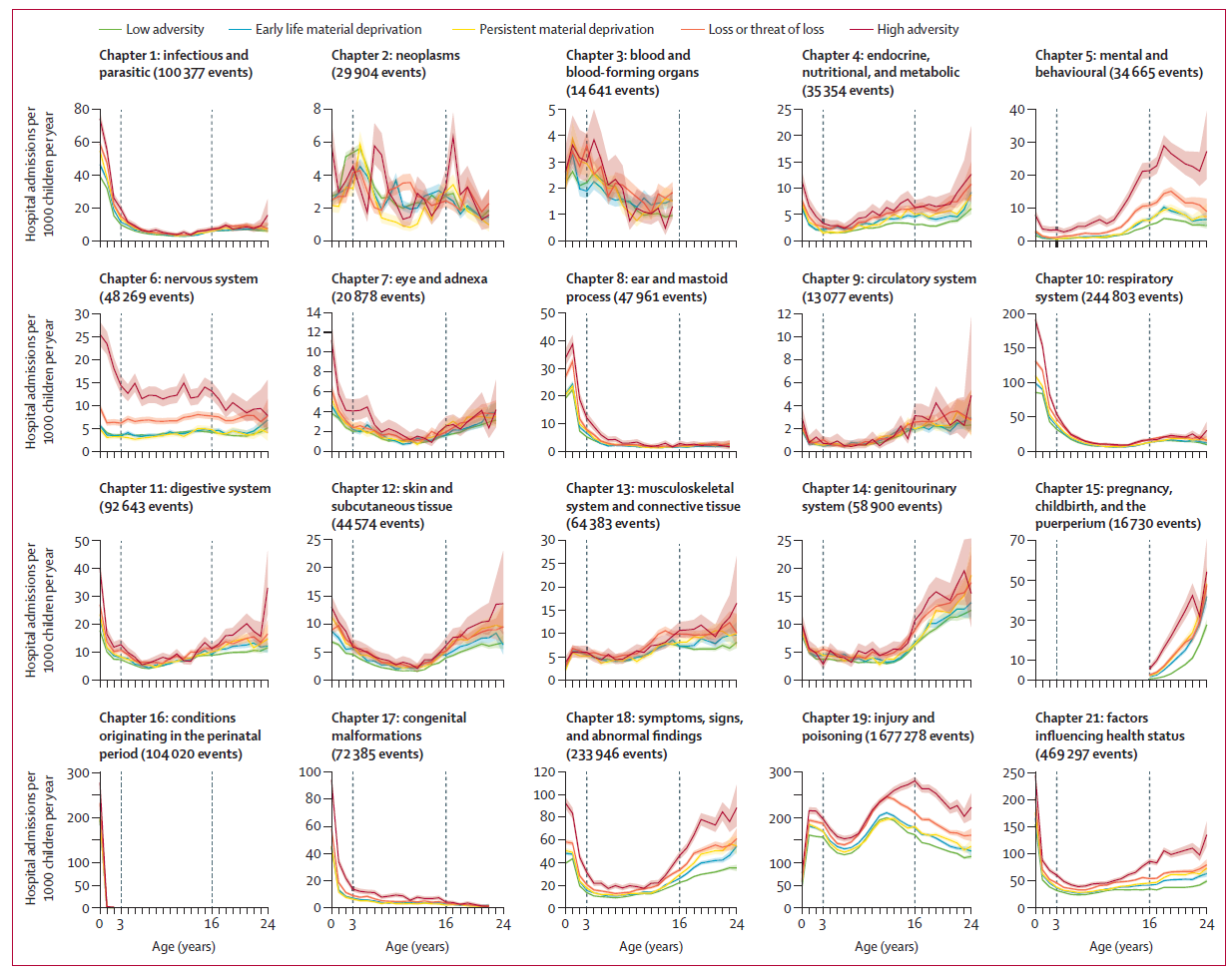Hospitalisations

Children who are exposed to adversities might be more susceptible to disease development during childhood and in later life due to impaired physiological and mental development. To explore this hypothesis, we used the DANLIFE cohort to assess hospitalisation patterns through childhood and into adult life among those exposed to different trajectories of adversities during childhood.
More than half a million children (aged 0–15 years) born between 1994 and 2001 were divided into five distinct trajectories according to their experience of childhood adversities, including poverty and material deprivation, loss or threat of loss within the family, and aspects of family dynamics. To describe comprehensively the disease patterns experienced by these groups of children, we assessed the associations of each adversity trajectory with hospital admission patterns according to the entire spectrum of disease diagnoses in the International Classification of Diseases 10th edition, from birth to 24 years of age, using survival models.
We included more than 3.8 million hospital admissions from birth to early adulthood. Hospitalisation rates were consistently higher in all four adversity groups compared with the low adversity group. The high adversity group (14,577 children, 3%), who were exposed to adversities of deprivation, family loss, and negative family dynamics, had a markedly higher rate of hospitalisations across all ages. For example, we observed 243 additional hospital admissions per 1000 person-years (95% CI 238–248) in the high versus low adversity group for those aged 16–24 years.
The close linkage between childhood adversities and poor lifelong health outcomes highlights a need for public health and policy attention on improving the socioeconomic circumstances children are born into to prevent the early emergence of health inequalities.
